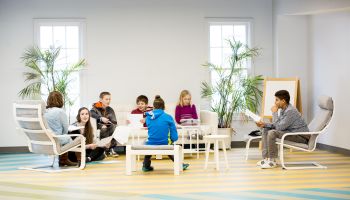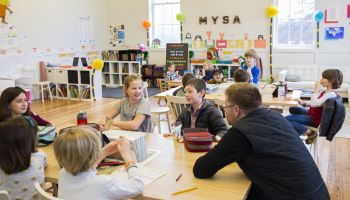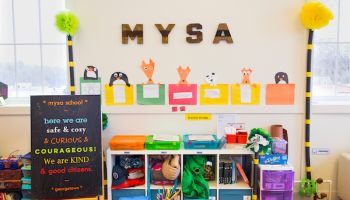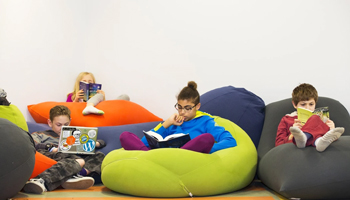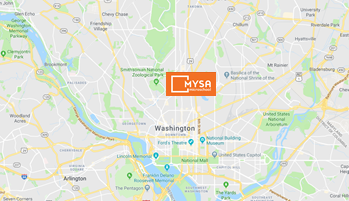
Sep 05 Immigration Connect Unit
Immigration Connect Unit
The immigration policy of Deferred Action on Childhood Arrivals (DACA) dominated political media coverage in the summer of 2017. Also given the demographic diversity of the DC metro area, the faculty at Mysa decided to kick off the 2017-18 school year with a comprehensive interdisciplinary unit of study on immigration. We focused heavily on various social sciences, including the history of immigration and migration patterns both in the United States and abroad, as well as the environmental, political, and economic causes of immigration. Our learners made connections between contemporary immigration issues and policies with those of previous generations, underscoring the racial and economic tensions that result from rapid shifts in demographics.
We invited parents to discuss their immigration experiences and also interviewed members of our community who are immigrants. Learners analyzed survey data on public sentiment toward various immigration policies, wrote essays based on immigrant experiences, and dispelled the myriad myths concerning immigrant groups. Our students also compared different waves of immigration, such as Irish immigrants in the mid-to-late 19th century and the Great Migration of African-American families from southern to northern states in the early-to-mid 1900s. Finding commonalities between seemingly different historical waves of immigration and identifying patterns in policy and public opinion helps students put our current immigration policies into an appropriate context.
Our unit culminated with a school-wide overnight trip to New York City, where we visited Ellis Island and the Tenement Museum. After a roughly eight-week study of immigration, it was essential that students were able to see the primary port of entry for millions of persons from around the world, to see how immigrants were treated when they arrived, and even view the Statue of Liberty on the horizon as the ferry chugged along. At the Tenement Museum on 103 Orchard Street, we met 14-year-old Victoria Confino, an immigrant who lived in the Orchard tenements in 1916. We were able to hear a more intimate portrayals of how immigrants lived immediately after arrival and their adjustments to life in a new country. We could not imagine a more fitting conclusion to our first Connect Unit of the year.

